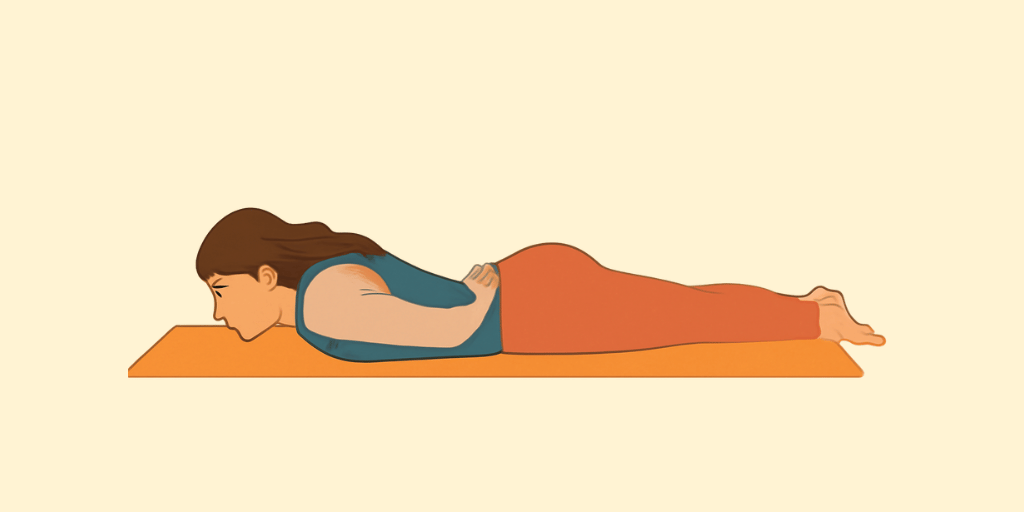Sanskrit Name: जेष्ठिकासन
English Name: Superior Pose
Description:
Jeshthikasana is a yoga posture that is not typically referenced in classical yoga literature. Its name suggests it may be a modern adaptation or variation of a traditional pose. The term “Jeshthikasana” is derived from two Sanskrit words: “Jeshthi” (ज्येष्ठि), meaning “elder” or “senior,” which often implies wisdom, significance, or age, and “Asana” (आसन), meaning “pose” or “seat,” indicating any yoga posture. Therefore, the name might represent a pose that reflects maturity, wisdom, or a sense of grounded authority, though its specific physical manifestation can differ based on various teaching styles or interpretations. The term Jeshthikasana does not appear in ancient texts like the Hatha Yoga Pradipika, Yoga Sutras, or Bhagavad Gita, indicating it may be a more recent or localized development.
Benefits:
Jeshthikasana, also known as the Elder Pose, offers several therapeutic benefits:
- Stress Relief: This asana promotes relaxation by calming the mind and reducing stress levels, making it beneficial for those dealing with anxiety.
- Improved Flexibility: Regular practice helps enhance flexibility in the hips, thighs, and lower back, contributing to better overall mobility.
- Enhanced Circulation: The pose encourages blood flow throughout the body, which can improve cardiovascular health and promote healing.
- Strengthening Core Muscles: Engaging the core during the pose helps to strengthen abdominal muscles, improving overall stability and posture.
- Mind-Body Connection: Practicing Jesthikasana fosters mindfulness, allowing individuals to connect with their bodies and breath, which can enhance mental clarity and focus.
- Relief from Fatigue: This asana can alleviate feelings of fatigue and lethargy, revitalizing the body and mind.
Incorporating Jesthikasana into a regular yoga practice can lead to these therapeutic benefits, supporting both physical and mental well-being.
Medical Conditions(Relief):
Jeshthikasana, or the Elderly Pose, is beneficial for several medical conditions. It can aid in improving flexibility and balance, making it particularly helpful for those with arthritis and joint pain. This asana also promotes relaxation and stress reduction, which can be advantageous for individuals dealing with anxiety or depression. Additionally, it may enhance respiratory function, benefiting those with asthma or other respiratory issues. Overall, practicing Jesthikasana can support physical and mental well-being, especially in older adults.
Medical Conditions(Avoid):
Jeshthikasana, also known as Elder’s Pose, should be avoided in the following medical conditions:
- Severe Back Pain: Individuals with acute or chronic back pain may exacerbate their condition by engaging in this asana.
- Knee Injuries: Those with recent knee injuries or chronic knee conditions should refrain from this pose, as it places pressure on the knees.
- Hip Issues: People with hip replacements or severe hip arthritis may find this asana uncomfortable or harmful.
- Pregnancy: Pregnant individuals should avoid this pose, especially in the later stages, due to the pressure it may place on the abdomen.
- Cardiovascular Conditions: Those with serious heart conditions or hypertension should consult a healthcare provider before attempting this pose, as it can affect circulation.
Always consult a healthcare professional before practicing any new asanas, especially if you have underlying health concerns.

